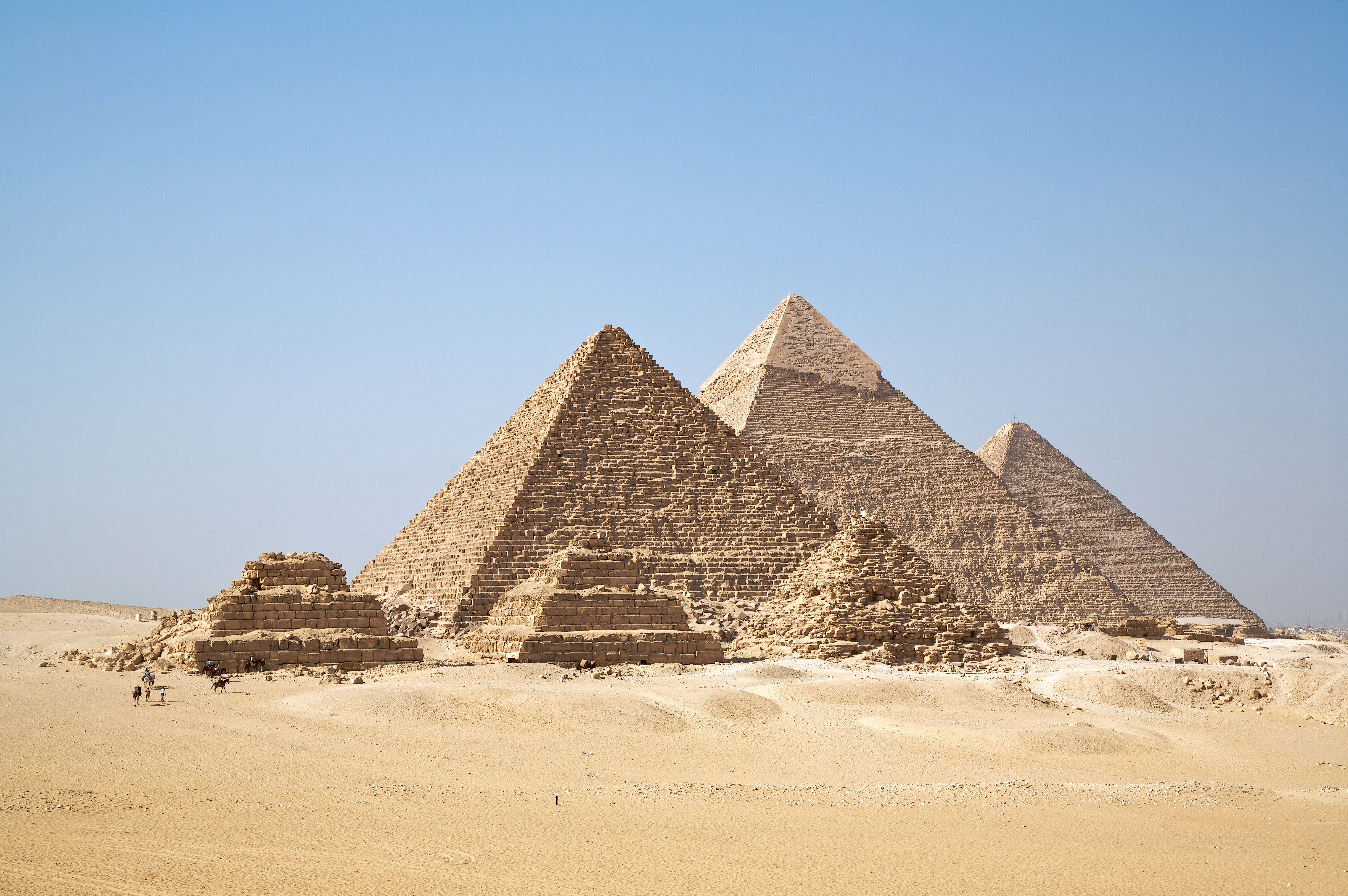Line 81: “thewed:” – Trained, instructed in morals or manners; having qualities or manners (of a specified kind). Chiefly in compounds, as ill-thewed, well-thewed adj., etc., -mannered, -conditioned, -natured. (OED)
Line 81: “levin:” – Noun: Lightning; a flash of lightning; also, any bright light or flame. (OED)
Line 83: “bivouacs:” – Noun: Originally, a night-watch by a whole army under arms, to prevent surprise; now, a temporary encampment of troops in the field with only the accidental shelter of the place, without tents, etc.; also the place of such encampment. (OED)
Line 84: “bride immortal in the maize”- Possible reference back to Pocahontas; maize refers to the corn crop, thus a possible connection to fertility.
Line 85: “Totem and fire-gall, slumbering pyramid”- Both of these are tribal and ritualistic artistic representations of the ancient spiritual worlds of the ancient Egyptians and early Native Americans.
The shape of Egyptian pyramids is thought to represent the primordial mound from which the Egyptians believed the earth was created. The shape of a pyramid is thought to be representative of the descending rays of the sun, and most pyramids were faced with polished, highly reflective white limestone, in order to give them a brilliant appearance when viewed from a distance. Pyramids were often also named in ways that referred to solar luminescence. For example, the formal name of the Bent Pyramid at Dashur The Southern Shining Pyramid, and that of Senwosret at el-Lahun was Senwosret is Shining.
While it is generally agreed that pyramids were burial monuments, there is continued disagreement on the particular theological principles that might have given rise to them. One theory is that they were designed as a type of “resurrection machine.”
The Egyptians believed the dark area of the night sky around which the stars appear to revolve was the physical gateway into the heavens. One of the narrow shafts that extends from the main burial chamber through the entire body of the Great Pyramid points directly towards the center of this part of the sky. This suggests the pyramid may have been designed to serve as a means to magically launch the deceased pharaoh’s soul directly into the abode of the gods.
All Egyptian pyramids were built on the west bank of the Nile, which as the site of the setting sun was associated with the realm of the dead in Egyptian mythology. (Wikipedia)
The meanings of the designs on totem poles are as varied as the cultures that make them. Totem poles may recount familiar legends, clan lineages, or notable events. Some poles celebrate cultural beliefs, but others are mostly artistic presentations. Certain types of totem poles are part of mortuary structures, and incorporate grave boxes with carved supporting poles, or recessed backs for grave boxes. Poles illustrate stories that commemorate historic persons, represent shamanic powers, or provide objects of public ridicule. “Some of the figures on the poles constitute symbolic reminders of quarrels, murders, debts, and other unpleasant occurrences about which the Native Americans prefer to remain silent… The most widely known tales, like those of the exploits of Raven and of Kats who married the bear woman, are familiar to almost every native of the area. Carvings which symbolize these tales are sufficiently conventionalized to be readily recognizable even by persons whose lineage did not recount them as their own legendary history.” (Reed 2003). House front poles were meant to show the success of the families.
Totem poles were never objects of worship. The association with “idol worship” was an idea from local Christian missionaries, who would have seen their association with Shamanism as being an occult practice.
Vertical order of images is widely believed to be a significant representation of importance. This idea is so pervasive that it has entered into common parlance with the phrase “low man on the totem pole.” This phrase is indicative of the most common belief of ordering importance, that the higher figures on the pole are more important or prestigious. A counterargument frequently heard is that figures are arranged in a “reverse hierarchy” style, with the most important representations being on the bottom, and the least important being on top. (Wikipedia)
Line 87: “largesse:” – Liberality, bountifulness, munificence (OED)
Line 89: “Labrador” – Labrador pine n. the grey or jack pine, Pinus banksiana, native to the northern parts of North America. (OED)
Line 93: “West, west and south!”- Perhaps referring to a directional heading; In navigation, a vehicle’s course is the angle that the intended path of the vehicle makes with a fixed reference object (typically true north). A heading is the angle of the vessel, aircraft or vehicle to an object (e.g. true north). (Wikipedia)
Line 93: “Cumberland” – Perhaps referring to Cumberland Gap in the Appalachian Mountains.
Line 94: “llano” – A level treeless plain or steppe in the northern parts of South America. (OED)
Line 95: sibilance:” – The character of being sibilant; a hissing sound. Also, an undue prominence of sibilants, esp. in reproduced sound. (OED)
Line 97: “caribou:” The North American Reindeer.
Line 101: “O Brave”- Most likely refers to the Native American Indian.
Line 102: “cobalt:” a. One of the chemical elements, a metal of a greyish colour inclining to red, brittle, slightly magnetic; in many respects closely resembling nickel; not found native, but extracted from various ores. Symbol Co. b. The name was originally given to the ores of this metal, and is still applied, with or without defining words, to various native compounds, as tin-white cobalt = smaltine n., CoAs2; grey cobalt., silver-white cobalt. = cobalt-glance n. at Compounds 2; red cobalt = cobalt-bloom n., cobalt-vitriol n. at Compounds 2; earthy cobalt. = asbolan n. (OED)
Line 104: “The serpent with the eagle in the boughs”- Possible reference to the Crested Serpent-eagle.
Possible reference to the Department of Health Crest; the motto “spes anchora vitae” means, “hope is the anchor of life.” (Wikipedia)






